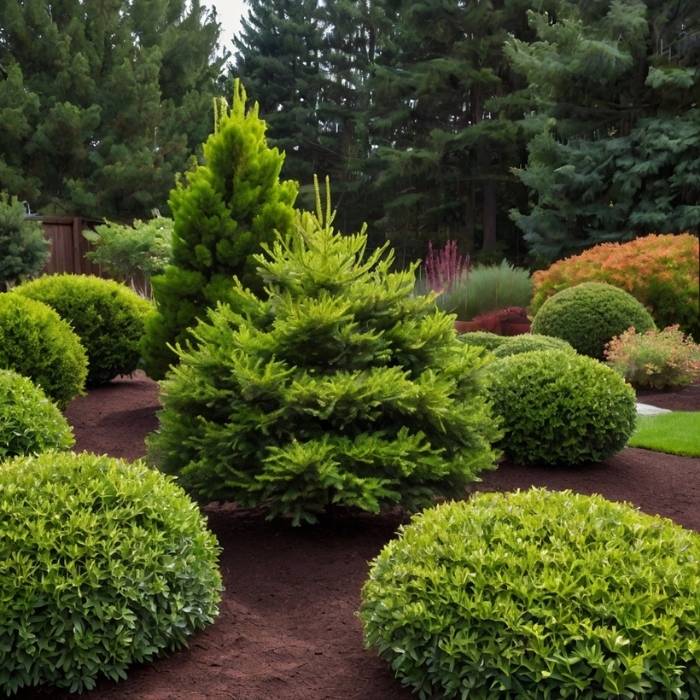Evergreen Shrubs: The Ultimate Guide to Year-Round Beauty in Your Garden
When it comes to creating a lush, vibrant garden that looks stunning all year long, evergreen shrubs are a must-have. These versatile plants provide structure, color, and texture to your landscape, even during the coldest months. Whether you’re a seasoned gardener or a beginner, this guide will walk you through everything you need to know about evergreen shrubs, from their benefits to the best varieties for your garden.
What Are Evergreen Shrubs?
Evergreen shrubs are plants that retain their leaves throughout the year, unlike deciduous shrubs that shed their foliage in the fall. This means they provide consistent greenery and structure to your garden, no matter the season. From compact varieties perfect for small spaces to towering shrubs that act as natural privacy screens, there’s an evergreen shrub for every need.
Benefits of Evergreen Shrubs
1. Year-Round Beauty
Evergreen shrubs keep your garden looking lively, even in winter. Their foliage adds color and texture when other plants have gone dormant.
2. Low Maintenance
Most evergreen shrubs are hardy and require minimal care once established. They’re drought-tolerant, pest-resistant, and adaptable to various soil types.
3. Privacy and Windbreaks
Tall evergreen shrubs like arborvitae or boxwood are perfect for creating natural privacy screens or windbreaks.
4. Wildlife Habitat
Many evergreen shrubs produce berries or flowers that attract birds, bees, and other pollinators, making them an eco-friendly choice for your garden.
5. Erosion Control
Their deep root systems help stabilize soil, preventing erosion on slopes or uneven terrain.
Top 5 Evergreen Shrubs for Your Garden
Here are some of the most popular evergreen shrubs, each with its unique characteristics:
1. Boxwood (Buxus)
- Why It’s Great: Boxwood is a classic choice for hedges and topiaries. Its dense foliage can be easily shaped, making it ideal for formal gardens.
- Care Tips: Plant in well-draining soil and prune regularly to maintain shape.
2. Rhododendron
- Why It’s Great: Known for its stunning spring blooms, rhododendrons also have glossy, evergreen leaves that add year-round interest.
- Care Tips: Prefers acidic soil and partial shade. Mulch around the base to retain moisture.
3. Holly (Ilex)
- Why It’s Great: Holly shrubs are iconic for their bright red berries and spiky leaves, making them a festive addition to winter landscapes.
- Care Tips: Plant in full sun to partial shade. Both male and female plants are needed for berry production.
4. Juniper (Juniperus)
- Why It’s Great: Junipers come in a variety of shapes and sizes, from ground covers to tall shrubs. They’re drought-tolerant and perfect for rock gardens.
- Care Tips: Thrives in well-draining soil and full sun. Avoid overwatering.
5. Camellia
- Why It’s Great: Camellias are prized for their elegant, rose-like flowers that bloom in late winter or early spring.
- Care Tips: Plant in acidic, well-draining soil and provide partial shade.
How to Choose the Right Evergreen Shrubs for Your Garden
Selecting the perfect evergreen shrubs depends on your garden’s specific needs. Here are some factors to consider:
1. Climate and Hardiness Zone
Ensure the shrubs you choose are suited to your region’s climate. Check the USDA Hardiness Zone Map to determine which plants will thrive in your area.
2. Size and Growth Habit
Consider the mature size of the shrub and how it will fit into your landscape. Compact varieties like dwarf boxwood are great for small spaces, while larger shrubs like yew can serve as focal points.
3. Sunlight and Soil Requirements
Some evergreens prefer full sun, while others thrive in shade. Similarly, soil pH and drainage can impact their growth.
4. Purpose
Are you looking for a privacy screen, a decorative accent, or ground cover? Your goal will influence the type of shrub you choose.
Planting and Caring for Evergreen Shrubs
1. Planting Tips
- Timing: The best time to plant evergreen shrubs is in early fall or spring, when the soil is workable.
- Spacing: Follow the recommended spacing for each variety to allow room for growth.
- Soil Preparation: Amend the soil with compost or organic matter to improve drainage and fertility.
2. Watering
- New Plants: Water deeply and regularly during the first year to establish strong roots.
- Established Plants: Most evergreens are drought-tolerant but benefit from occasional deep watering during dry spells.
3. Pruning
- When to Prune: Prune in late winter or early spring before new growth begins.
- How to Prune: Remove dead or damaged branches and shape the shrub as needed. Avoid over-pruning, as this can stress the plant.
4. Fertilizing
- Use a balanced, slow-release fertilizer in early spring to promote healthy growth. Avoid over-fertilizing, as this can lead to excessive foliage at the expense of flowers or berries.
Common Problems and Solutions
Even though evergreen shrubs are relatively low-maintenance, they can face a few challenges:
1. Pests
- Aphids and Spider Mites: These pests can cause yellowing leaves. Use insecticidal soap or neem oil to control infestations.
- Scale Insects: Look for small, bumpy growths on stems. Prune affected areas and apply horticultural oil.
2. Diseases
- Root Rot: Caused by overwatering or poor drainage. Ensure the soil is well-draining and avoid waterlogging.
- Leaf Spot: Fungal diseases can cause spots on leaves. Remove affected foliage and apply a fungicide if necessary.
3. Winter Damage
- Windburn: Harsh winter winds can dry out foliage. Plant shrubs in sheltered locations or use burlap screens for protection.
- Snow Load: Heavy snow can break branches. Gently brush off snow to prevent damage.
Creative Uses for Evergreen Shrubs in Landscaping
1. Hedges and Borders
Use shrubs like boxwood or privet to create clean, defined edges for your garden beds.
2. Focal Points
Plant a striking shrub like camellia or holly as a centerpiece in your garden.
3. Ground Cover
Low-growing varieties like creeping juniper are perfect for covering slopes or bare patches.
4. Container Gardening
Dwarf evergreens like dwarf Alberta spruce thrive in pots, adding greenery to patios and balconies.
Conclusion
Evergreen shrubs are the backbone of any beautiful garden, offering year-round color, structure, and functionality. Whether you’re looking to create a privacy screen, add visual interest, or attract wildlife, there’s an evergreen shrub to suit your needs. By choosing the right varieties and providing proper care, you can enjoy a thriving, low-maintenance landscape that looks stunning in every season.
So, what are you waiting for? Start exploring the world of evergreen shrubs and transform your garden into a year-round oasis!

